Cádiz is one of Spain’s provinces with the most archaeological sites. Throughout history, various civilizations have settled in the Mediterranean as a result of their position.
In truth, the capital is the oldest city in the West, having been built by the Phoenicians about three thousand years ago. The various towns that settled in Cádiz left a cultural mark that may still be seen in the character of Cádiz residents.
These are some of the most important archaeological sites in the world.
Contents
- 1 Roman city of Ocuri (Ubrique)
- 2 Doña Blanca (Puerto de Santa María)
- 3 Carteia Archeological Museum (San Roque)
- 4 Algarbes Necropolis (Tarifa)
- 5 Roman ovens of El Rinconcillo and Archaeological Park of the Meriníes Walls (Algeciras)
- 6 Baelo Claudia (Bolonia)
- 7 Caños de Meca, Barbate
- 8 Gadir Phoenician Archaeological Site (Cádiz)
- 9 Punic and Phoenician ovens (San Fernando)
- 10 Tajo Cave (Benalup)
Roman city of Ocuri (Ubrique)
The Roman town of Ocuri is located in what nowadays is Ubrique, in the province of Cadiz, In Andalusia.
The Iberian period (5th century BC) and Roman times are represented at this archaeological site (1st-3rd centuries AD).
Its strategic location, which is dominated by its height and reinforced by its walls, as well as its size, suggest that it was a pre-Roman («oppidum») and Roman city of considerable importance, as evidenced by the monumentality of the archaeological remains it maintains.
During the tour, you will view vestiges of the Wall’s architecture, as well as a monumental structure such as the Mausoleum, the Roman Baths’ plant, architectural remains of dwellings, water storage cisterns, part of an ancient roadway, and architectural remains of the Roman Forum.
The archaeological site is located within the Sierra de Grazalema Natural Park, which allows visitors to take in the scenery of this region of the Sierra de Cádiz.
Check out their website for more information about their costs and timetables.
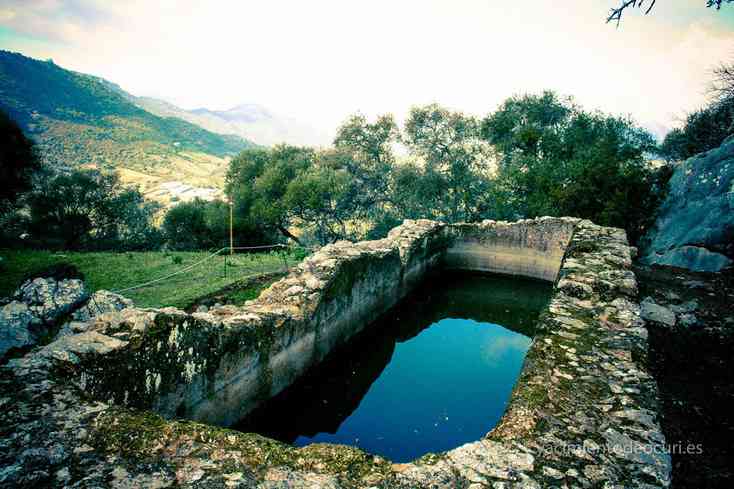
Doña Blanca (Puerto de Santa María)
It used to be a Punic river port and Phoenician city in El Puerto de Santa Maria Municipality in Cádiz Province, Andalucia, Spain.
It is the largest remaining Punic river port in the Mediterranean and the only Phoenician city that has been preserved in its entirety. The enclave you can see now is merely a small portion of the 200-acre land.
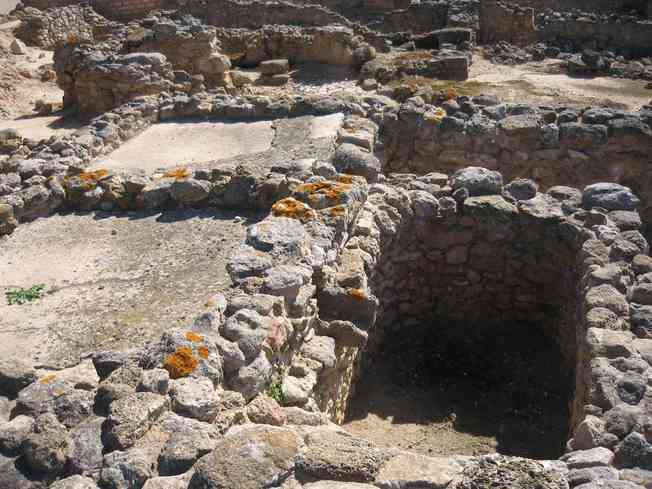
Carteia Archeological Museum (San Roque)
The Phoenicians arrived in Cerro del Prado, about 2 km northwest of Carteia, in the seventh century BC, as part of their major and civilizing economic activities. Moreover, his descendants, the Carthaginians or Punics, built what people know now as Carteia in the fourth century BC.
When more than 4,000 males, who had claimed legal status from the Roman Senate, arrived there, it formed the Colonia Libertinorum Carteia. There was no jurisprudence on their status because of their origin. Therefore, the Senate declared them libertini (children of freedmen), which aided their acquisition of Latin citizenship. Carteia became the first Latin colony outside of Italy in 171 BC.
Besides, the forum, the baths, the theater, the fortifications, and a salting factory are among the Roman ruins of Carteia.
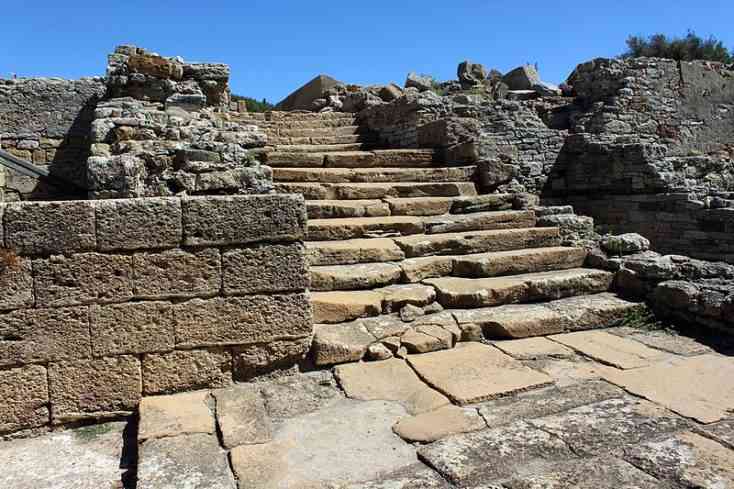
Algarbes Necropolis (Tarifa)
It dates from the Chalcolithic and Bronze Ages, towards the end of the third millennium BC, and is one of the most important archaeological complexes in the province of Cadiz. Besides, they used it as a burial and worship site by various civilizations in the past, including the Phoenicians, Romans, Arabs, and medieval ages. It is set among calcarenite outcrops, where they built half a hundred funeral constructions and artificial caves in the shape of a circular chamber with entrances at various levels. You can also see Cupuliform graves with lateral access, hypogeic tombs with vertical entrances in the form of wells or silos, and mixed construction tombs.
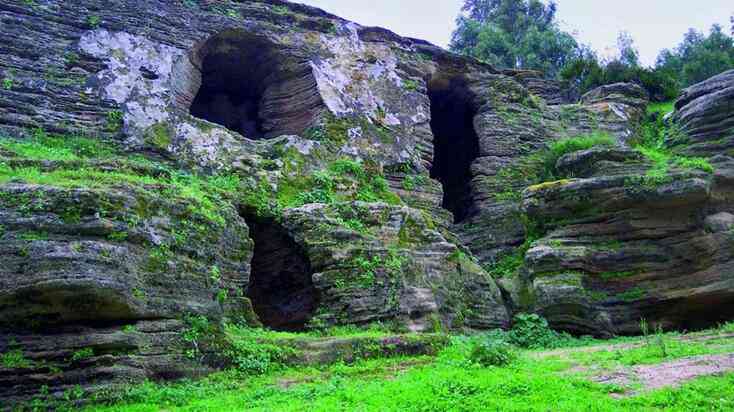
Roman ovens of El Rinconcillo and Archaeological Park of the Meriníes Walls (Algeciras)
The Roman ovens of El Rinconcillo located in the Spanish city of Algeciras were part of the amphora manufacturing complex of the city of Portus Albus, which supplied containers for transport to the garum manufacturing industry.

Baelo Claudia (Bolonia)
Baelo Claudia, the roman city in Cadiz is located a few kilometers northwest of the current city of Tarifa. It is in the south of the Andalusian province. What many do not know is that in the middle of Bolonia beach, you will find one of the wonders of the Cadiz coast.
Declared a National Historical Monument, the archaeological complex of Baelo Claudia was a very important ancient Roman city in its time. Currently, it is one of the essential places to see in the province of Cádiz.
The great state of conservation of the ruins and the environment in which it is located, make this archaeological complex a jewel. And a great luck for anyone who can visit it.
Romans founded Baelo Claudia at the end of the 2nd century BC. On a previous Phoenician-Punic settlement and is strategically located in order to serve as a link between the peninsula and North Africa, also under Roman power.
It was a significant fishing center in which an important fish salting industry was developed. The production of “garum“, a highly appreciated fish sauce, especially in the city of Rome, where it was exported in large quantities.
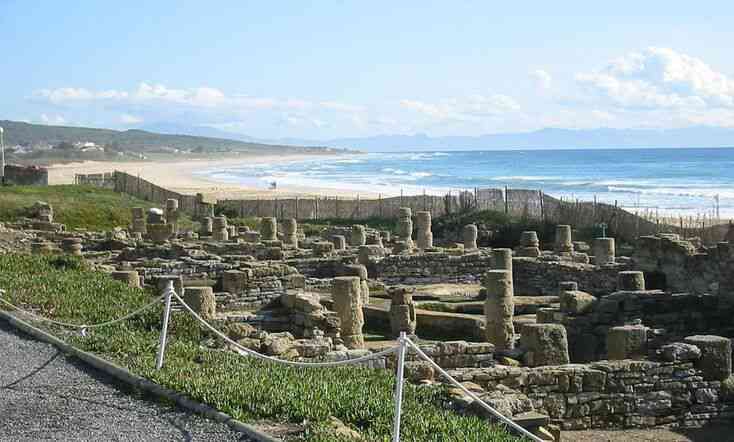
Caños de Meca, Barbate
In the sandbanks of the Caños de Meca in Barbate (Cádiz), remnants of various types, dating from various periods, have been uncovered. Making the newly discovered site a unique location. They discovered prehistoric and Roman relics, which they exhibited to the media and authorities on Thursday.
They built A spectacular Roman house with a fish farming and salting area. On the order of a great lord at Cape Trafalgar in the 1st century BC. In the Bronze Age, people carved a megalithic burial into the rock in the same location.
However, they created a Roman bath about a century later. Then they built a medieval Mecca settlement. Followed by a fierce battle in 1805 and the construction of the lighthouse that is still visible today. That is to say, extraordinary historical episodes in the same Cádiz area.
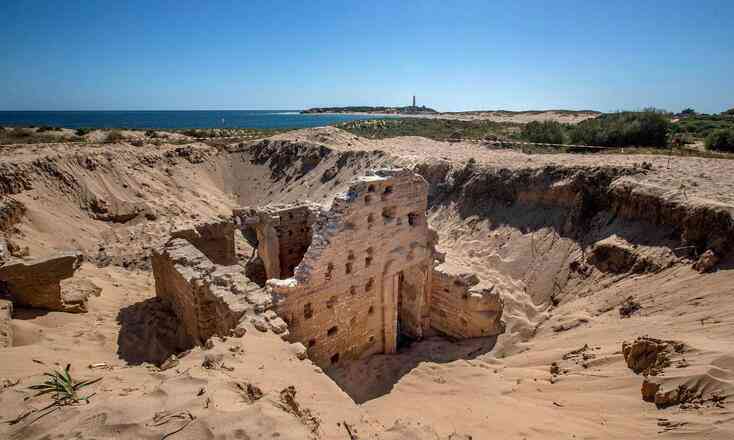
Gadir Phoenician Archaeological Site (Cádiz)
One of Cádiz’s most outstanding archaeological treasures.
Gadir is one of the first Phoenician settlements in the Western world. The first tentative immigration of the Phoenicians from Tyre took place in the first part of the first millennium before Christ. Forming a stable colony on a date that was impossible to pin down until the finds made beneath the Theater.
Due to the rarity of architectural remains of Phoenician settlements throughout the Mediterranean, you must see the Gadir archaeological site and you can learn about the lost Phoenician culture. The site is situated on the highest point of Erytheia, the smallest of the ancient Cadiz archipelago. Beside, it has become an essential point of reference for several interpretations of the likely position of Gadir’s urban center.

Punic and Phoenician ovens (San Fernando)
Their high conservation status and enormous quantity. The Punic and Phoenician Kilns of San Fernando are a unique group. They are located in the same-named roundabout, which is at the intersection of Calle Benjamin López and Avenida Al-andalus. Glazing protects them from the elements while allowing viewing.
These ceramic factories date from Gadir’s golden age. Beside, they primarily dedicated to the production of amphorae and other containers for the transportation of preserves. Structures date from diverse periods, but particularly from the 5th and 4th centuries before Christ. You can find parts of these furnaces and ceramics at the city’s museum.
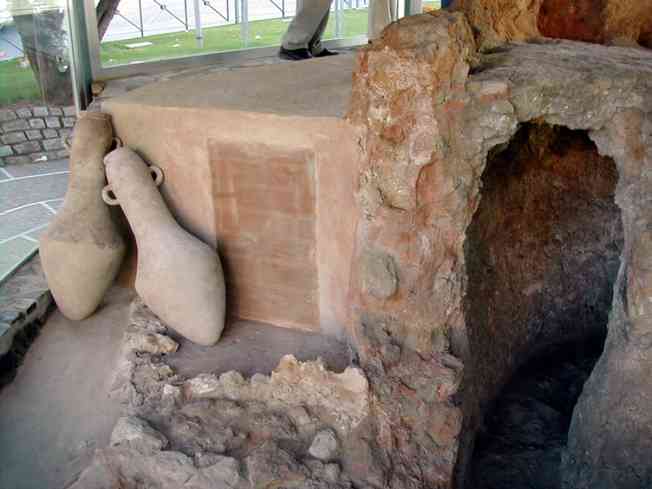
Tajo Cave (Benalup)
In Prehistory, Benalup-Casas Viejas experienced one of its most glorious times. The numerous cave paintings found in the caves and tombs are proof of this. Located in Sierra Momia, in the municipality of Benalup-Casas Viejas, in a natural setting within the Los Alcornocales Natural Park.
People regard it as southern Spain’s most important cave art station. This picture ensemble shows the end of the Paleolithic and the beginning of the Metal Age. Besides, people regard it as a genuine prehistoric sacred site.
Because of the cave’s proximity to the already dried-up Laguna de La Janda. There are over 500 figures on the cave’s walls. Besides,with a high percentage of them being birds.

For more info and insights, get in touch with us here or write to us at info@alsherry.com and we’d be delighted to arrange / make plans with you or for you!
